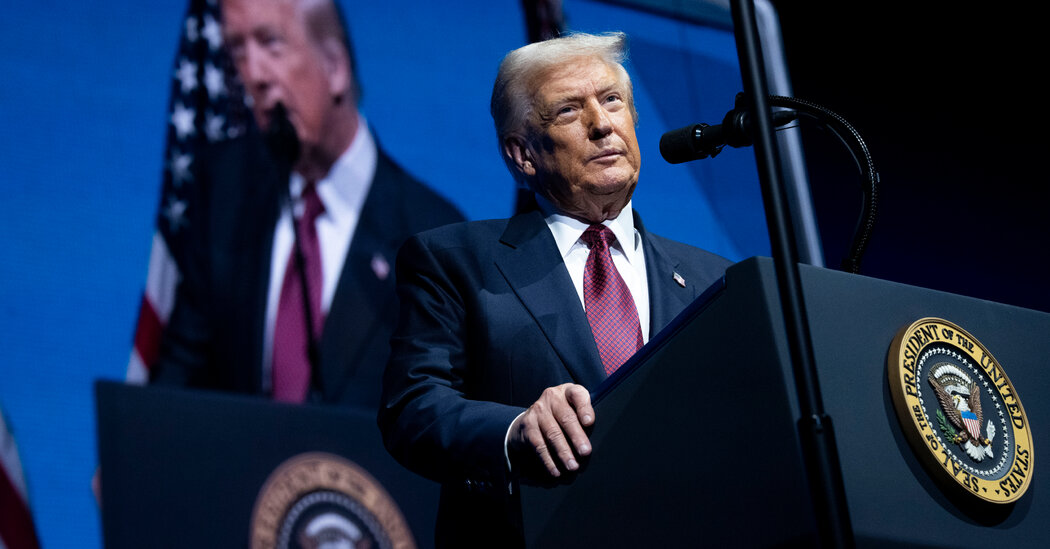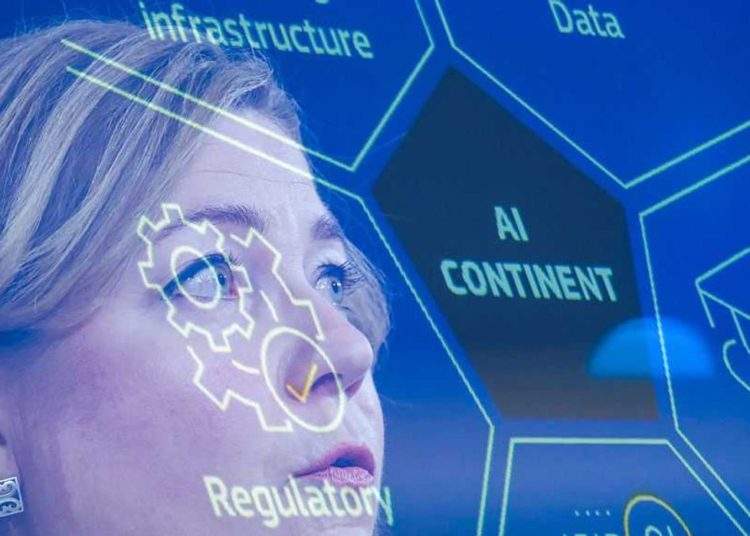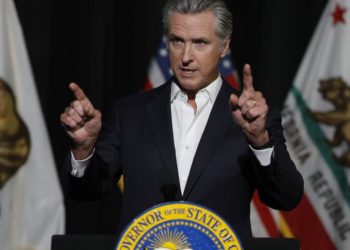President Trump has fashioned tariffs as the utility knife of his second-term agenda. They have helped him to raise revenue, shape trade negotiations and bend other nations to his political will.
But, as Mr. Trump learned on Wednesday, the primary tool in his punishing and ever-expanding trade war may soon reach its limit.
The fate of the president’s sweeping taxes on imports from nearly every country now rests in the hands of the Supreme Court’s nine justices, most of whom sounded skeptical about Mr. Trump’s novel and vast assertion of trade powers.
It is impossible to predict how a divided bench may ultimately rule in the landmark case, one that could redefine the scope of presidential trade authority and limit Mr. Trump’s ability to issue tariffs on a whim. But the court’s interrogation — across nearly three hours of oral arguments — underscored the grand political stakes for the president and his economic vision.
Since winning the election one year ago, Mr. Trump has targeted friends and competitors including Canada, Mexico, the European Union and China with an escalating set of duties. Those taxes on imports have primarily fallen on American consumers and businesses.
Mr. Trump has imposed these tariffs without the approval of Congress, invoking a decades-old emergency law to impose a 10 percent tax on nearly every trading partner, plus higher levies on dozens of countries.
Both the tariffs, and the tactics for putting them into place, are equally important for Mr. Trump, who relishes the ability to adjust duties with the stroke of a pen. He has wielded that emergency authority in a bid to reduce the national debt, support domestic manufacturing and pressure other countries into favorable deals, while trying to achieve a host of other objectives, many unrelated to trade.
Speaking at an event in Florida, shortly after the justices concluded proceedings, Mr. Trump on Wednesday boasted anew about the fiscal benefits of his tariffs, bragging that they are bringing in “hundreds of billions” in revenue. So far, the United States has collected more than $200 billion from tariffs this year, more than double the amount in 2024, federal records show.
The president has said he would use that money for a range of priorities, including as an offset to the roughly $4 trillion package of tax cuts he signed into law earlier this year. But a loss at the Supreme Court could force the administration to refund some or all of the money, a prospect that Mr. Trump and his top advisers have described as an economic calamity.
And yet, Mr. Trump and his deputies looked to brush off the possibility of defeat on Wednesday, even with the fate of their second-term agenda hanging in the balance.
“It went very well,” Scott Bessent, the Treasury secretary, told reporters later at the White House. Asked if the government had a backup plan, he said he would not discuss it.
“It gives him the ultimate negotiating authority,” Mr. Bessent said of the president’s tariff powers.
Mr. Trump’s strategy hinges on the International Emergency Economic Powers Act, a law that Congress adopted in 1977 largely to constrain presidential power over trade. No president before Mr. Trump had used the law to issue tariffs, a word that does not appear in the statute.
With the law, Mr. Trump has been able to impose high rates on every U.S. trading partner without a lengthy investigation or a protracted battle in Congress. He has dubbed these tariffs “reciprocal,” and said that they were a response to a national emergency, the persistent trade deficits between the United States and other countries.
Yet Mr. Trump has also applied these tariffs on countries with which the United States runs a trade surplus, including Australia. He has issued other tariffs for punitive reasons, or to accomplish goals beyond the remit of trade.
Mr. Trump announced a 50 percent tax on imports from Brazil this year, in part because of that country’s treatment of a political ally, Jair Bolsonaro, who faced charges for inciting a coup. Mr. Trump has also presented his steep rates on Mexico and Canada partly as a response to illicit drugs flowing across the border.
Two groups of states and small businesses challenged the legality and expansive scope of Mr. Trump’s tariffs beginning this spring, in a pair of lawsuits that together reached the Supreme Court on Wednesday. Even the court’s conservative justices questioned if Congress had intended to cede to the president such broad tariff powers, which the Constitution gives to lawmakers.
“I think the justices all understand that how they resolve this case will have not just massive implications on the economic policy side, but actually will be a harbinger of the court’s relationship with the administration more broadly,” said Stephen I. Vladeck, a professor at the Georgetown University Law Center.
In a speech on Wednesday about his economic agenda, Mr. Trump spoke openly about the ways that unbridled tariff power had aided his agenda. He said it had allowed him to strike trade deals, including with countries like Japan, and to negotiate resolutions in some foreign conflicts.
“Without tariffs that would have never happened,” he said.
Even if the Supreme Court invalidates Mr. Trump’s ability to use the emergency authority to levy tariffs, he would still be able to impose taxes on imports. The president has already used a national security law to put tariffs on specific items and industries, from lumber and steel to end products like heavy-duty trucks and bathroom vanities.
But those powers can be limited, and may require lengthy investigations before any tariffs can be finalized. None of those rules are as flexible as the emergency powers law.
Nick Iacovella, the executive vice president of the Coalition for a Prosperous America, a group that supports Mr. Trump’s tariffs, described the emergency powers law as “absolutely essential to the Trump administration’s agenda.”
But, he added, “even if they were to lose the SCOTUS case, they still could have almost the same policy base line as we have now.”
The Trump administration has remained bullish about its prospects. Mr. Bessent, who appeared on Fox Business Network hours after the hearing, said he was “very optimistic” that the court would rule in the president’s favor. He added that the plaintiffs had “embarrassed” themselves by failing to understand economics and trade policy.
If Mr. Trump were to prevail at the Supreme Court, however, it could “embolden the administration,” said Ted Murphy, a co-leader of the trade practice at the law firm Sidley Austin. It would solidify the president’s ability to use a law with “very few, if any, guardrails” to issue tariffs in response to anything that Mr. Trump deems to be a national emergency.
That prospect has unsettled Democrats, who have led a push on Capitol Hill to try to undo some of the president’s duties. In the Senate, they attracted a handful of Republican votes last week to block the taxes on Brazil, though the measure faces daunting odds in the House.
“We’ve started to see the reticence of Congress to engage in these across-the-board tariffs,” said Senator Amy Klobuchar, Democrat of Minnesota, who attended the oral arguments.
Ryan Majerus, a former Biden administration official who is now a partner at King & Spalding, said a victory for the president could allow Mr. Trump to tax a wider array of imports and other forms of commerce, including perhaps the flow of investment into the United States.
“There’s lots of ripple effects that could happen depending on what the court rules, in both ways,” he said.
Tony Romm is a reporter covering economic policy and the Trump administration for The Times, based in Washington.
Ana Swanson covers trade and international economics for The Times and is based in Washington. She has been a journalist for more than a decade.
Alan Rappeport is an economic policy reporter for The Times, based in Washington. He covers the Treasury Department and writes about taxes, trade and fiscal matters.
The post A Skeptical Supreme Court Puts Trump’s Economic Agenda in Question appeared first on New York Times.




